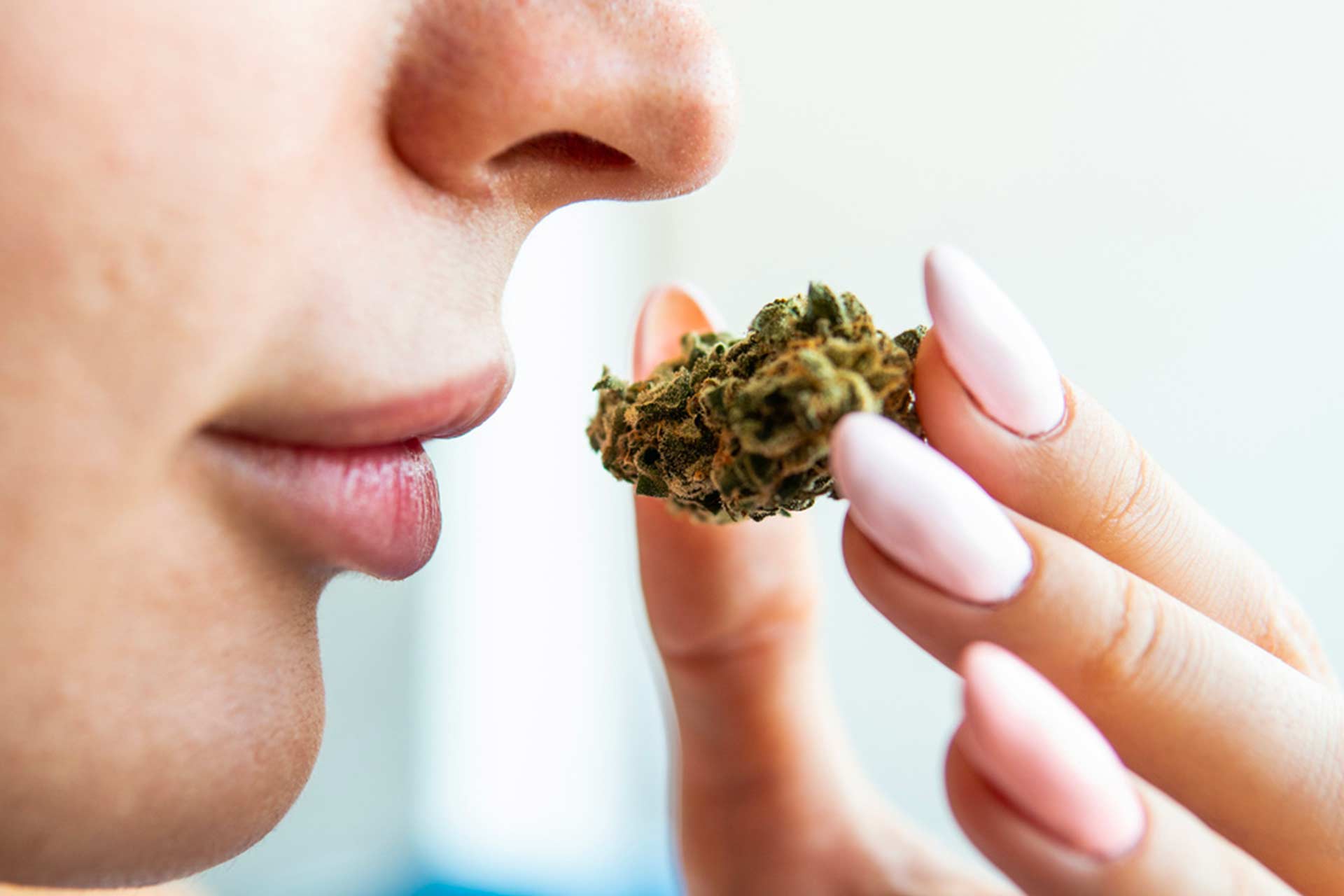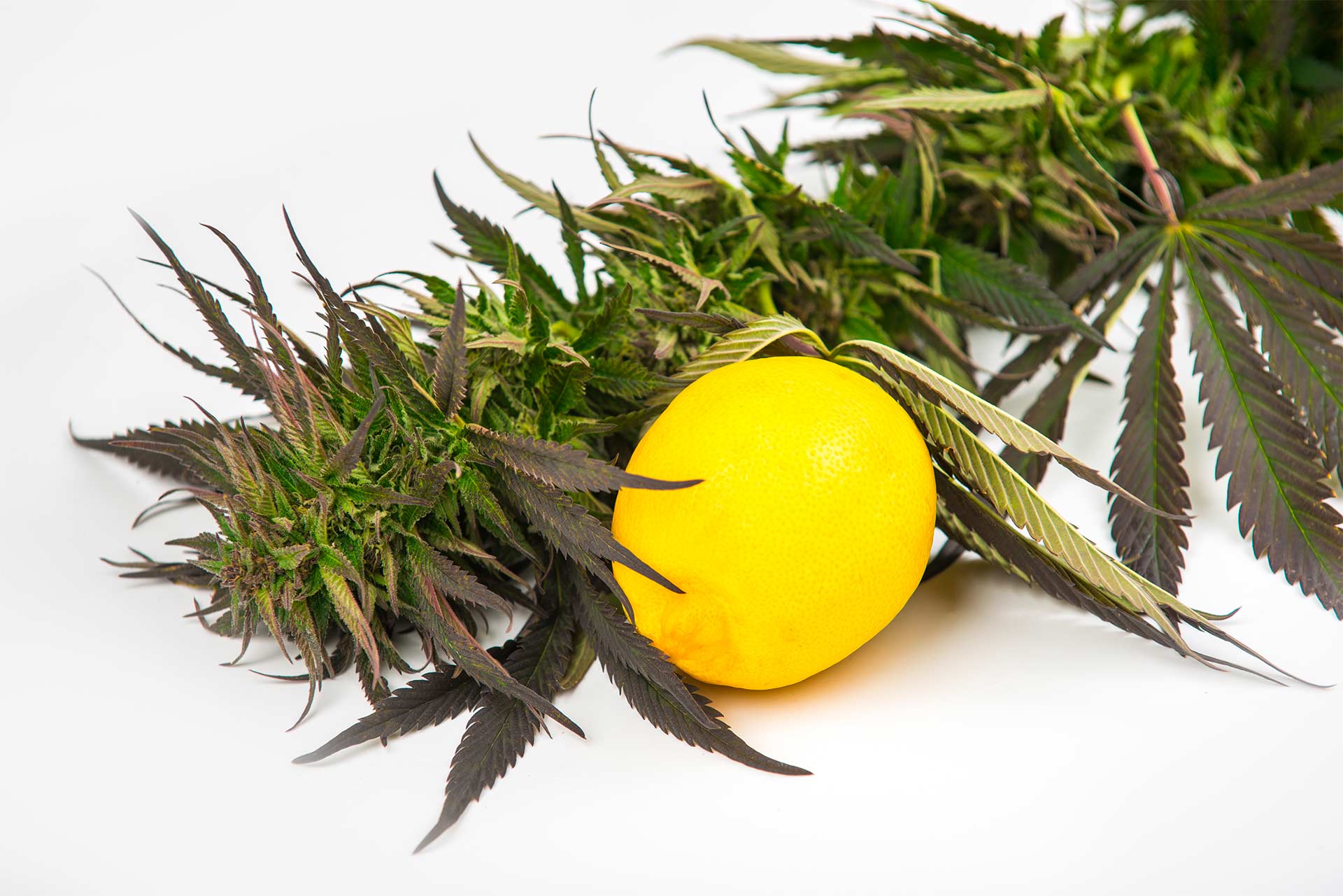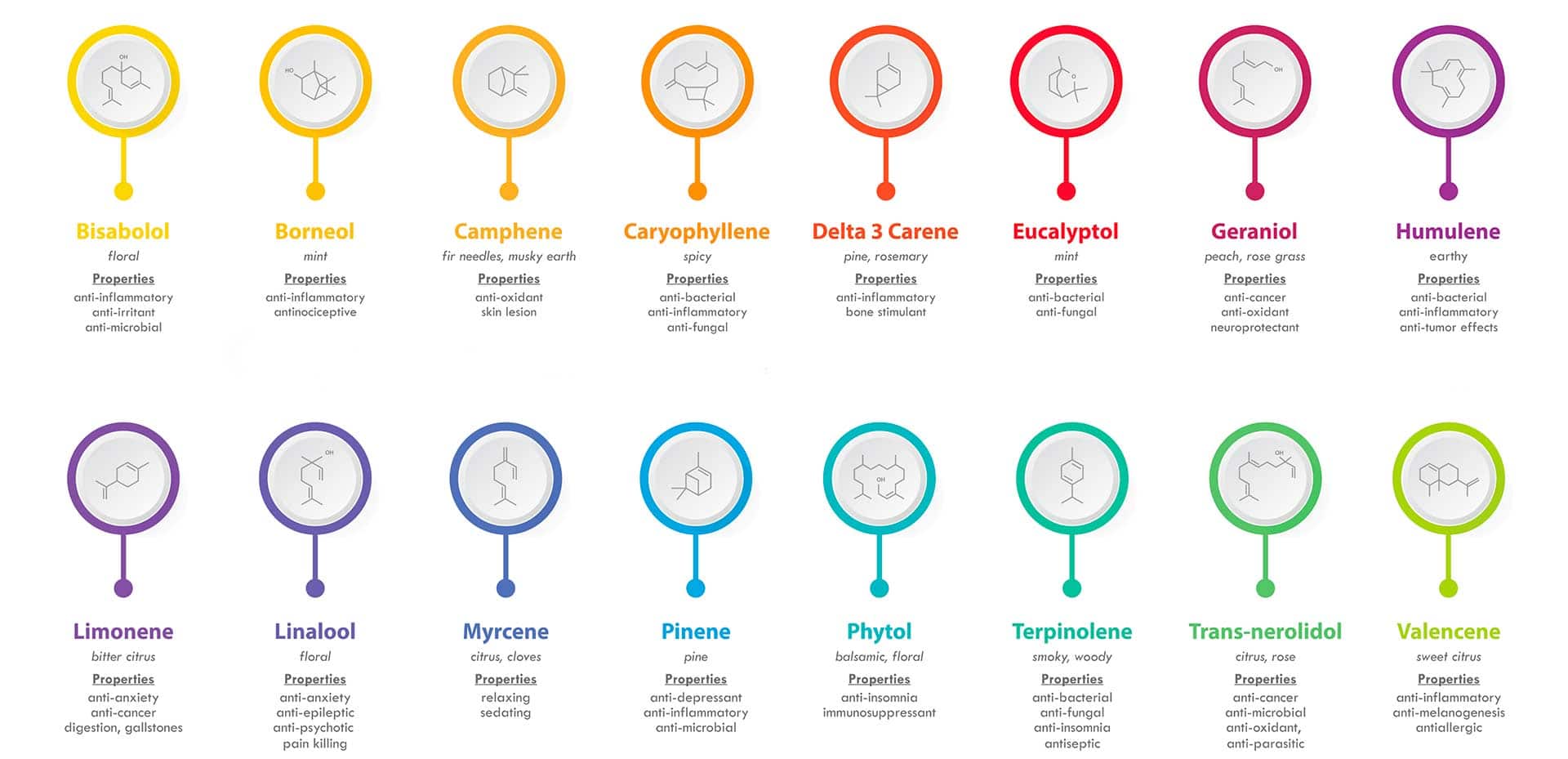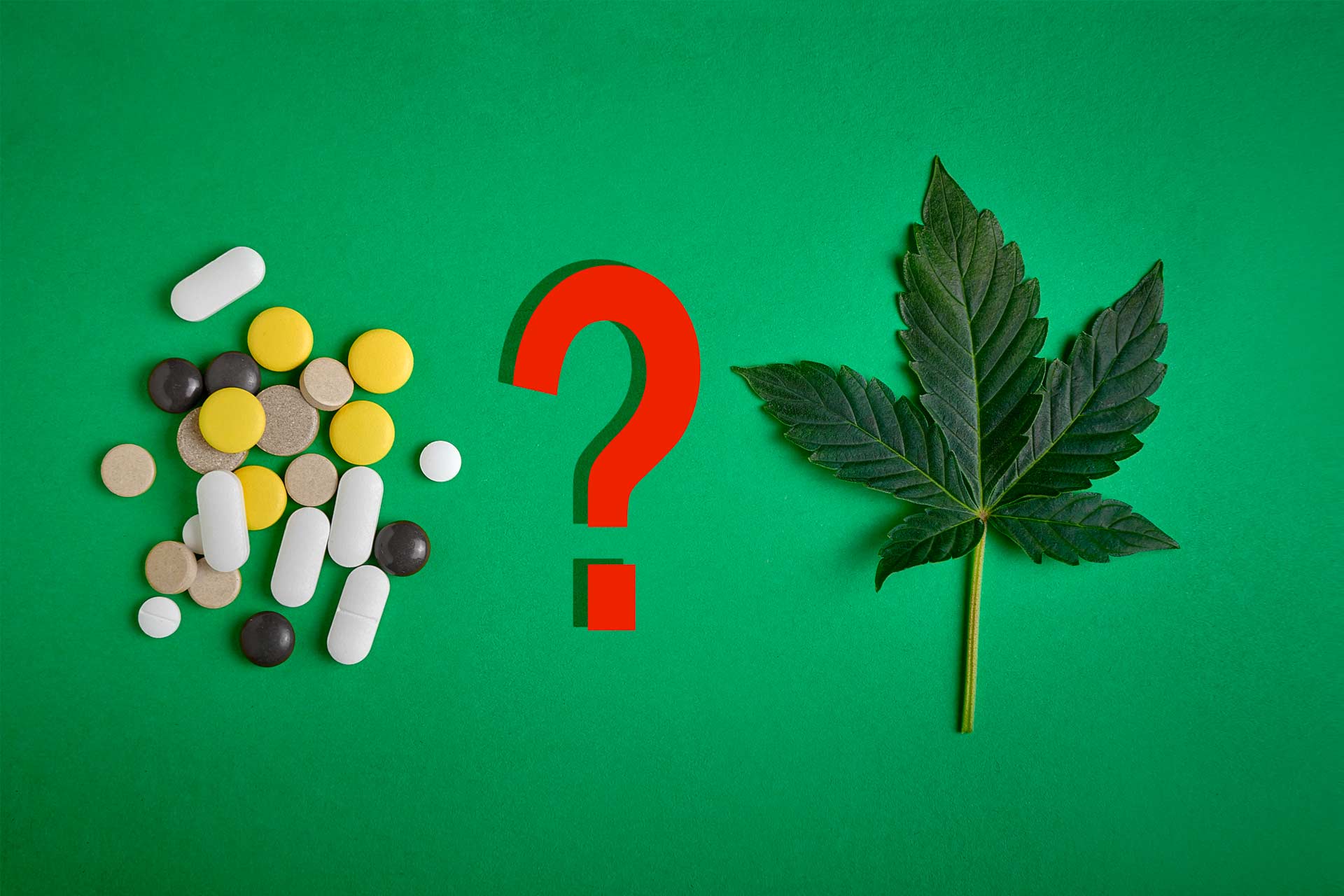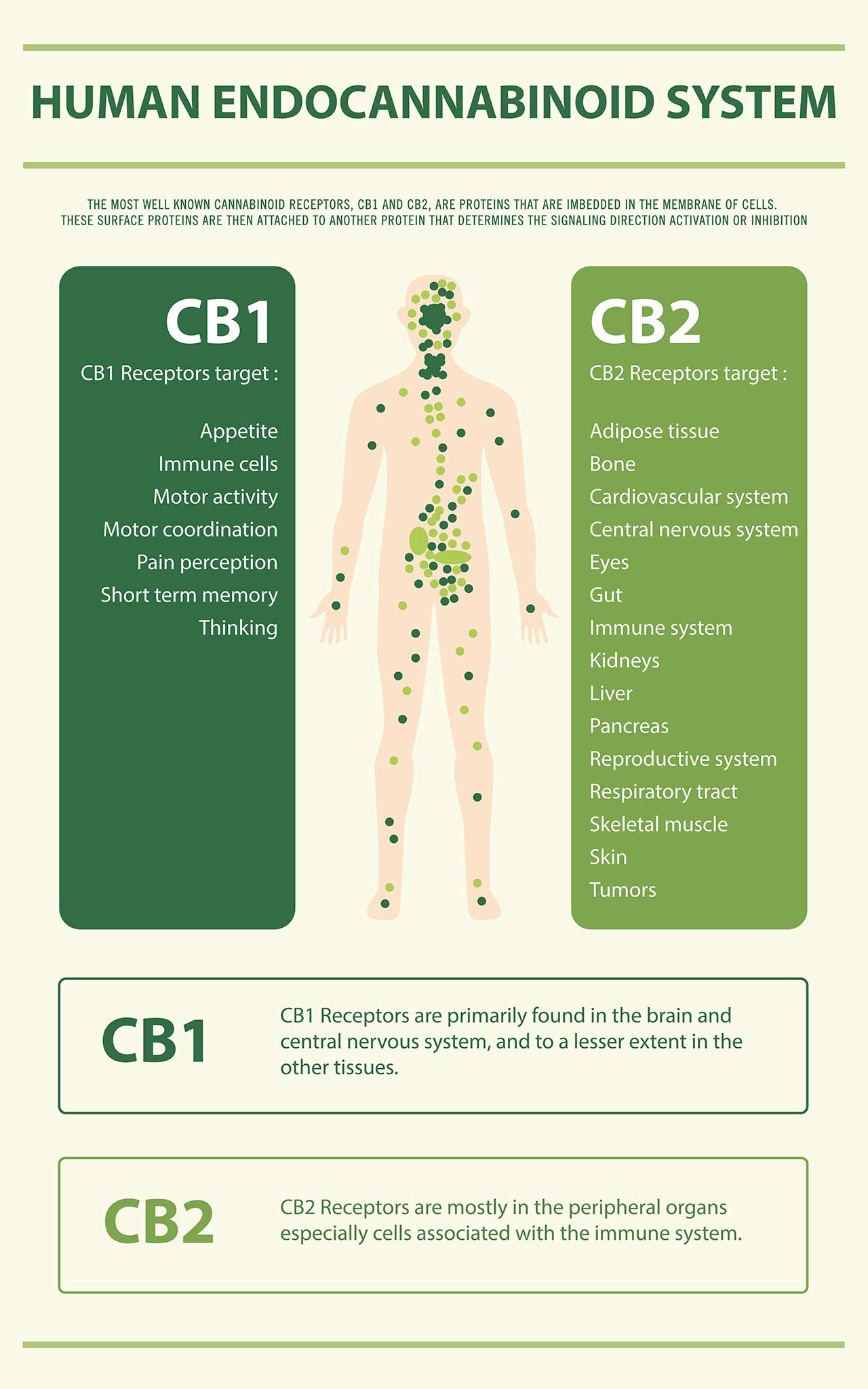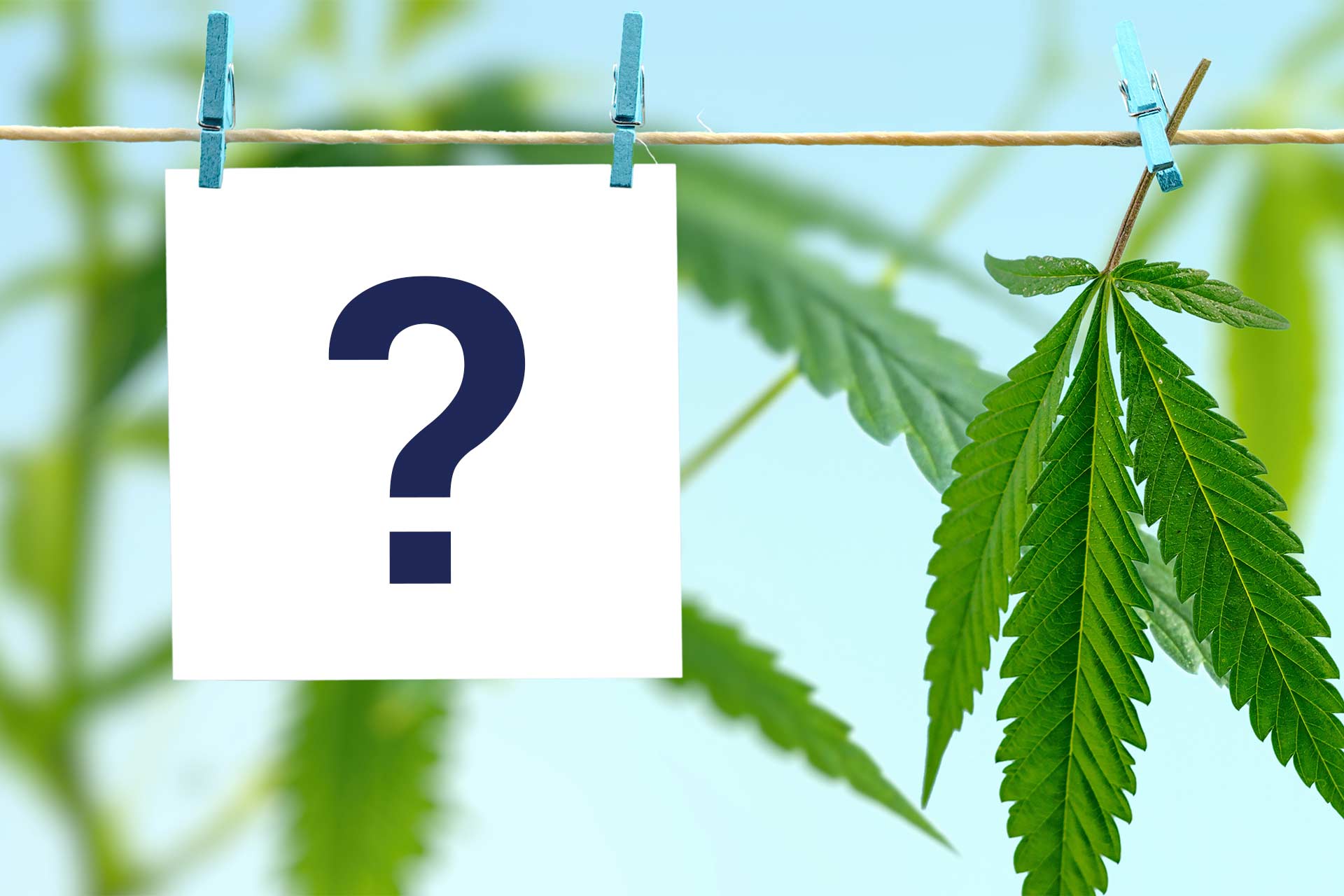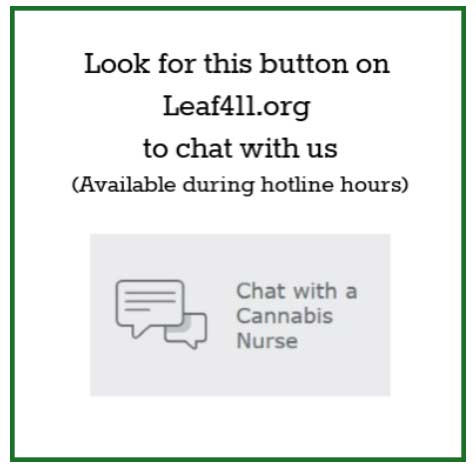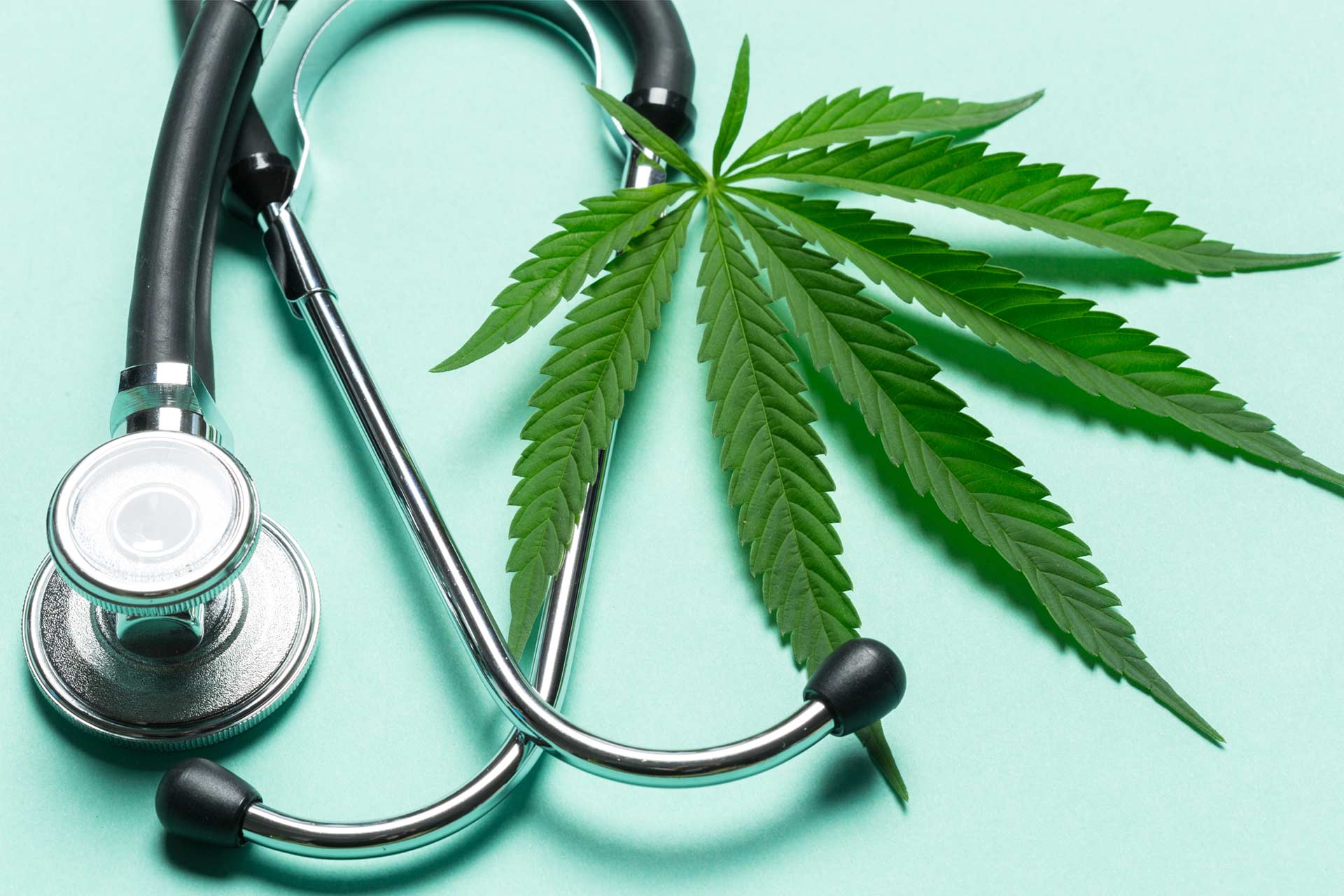Terpenes and THC: Why Terpenes Matter More Than You Think
Medically reviewed by Katherine Golden, RN
Written by Denise Rustning
If you visit internet forums, you’ll find countless questions like, “What’s the best marijuana strain for pain?” or “What’s the best daytime strain for me?”
In this post, we’ll help you find the best product for your specific needs by taking a look at the role that terpenes play in cannabis’s effects. (Not sure what terpenes are? Check out our previous post here.)
Why do terpenes matter? Isn’t it just a matter of finding the plant with the most THC?
The short answer: No. It’s not all about THC or even the type of strain.
Many people compare the THC or CBD to a singer in a rock band. Sure, they lead the show, but without all the other instruments, the experience would be very different!
Different Cannabis Types: Sativa, Indica, and Hybrid
Step into a legal marijuana dispensary or look online at their menu, and you’ll find many different product choices. (We use “marijuana” when talking about cannabis containing >0.3% THC.)
Cannabis is usually divided into three general groups—sativa, indica, and hybrid. Within each of these groups, you’ll find different strains (scientifically referred to as “chemovars”).
What makes all these strains’ effects so different from one another? You might be surprised to find out it’s not whether the strain/chemovar is classified as a sativa, indica or hybrid, or even the amount of THC.

Sativa, Indica or Hybrid Plants: The Scientific Perspective
There’s ongoing debate if the cannabis plant includes several distinct species or not: cannabis sativa, cannabis indica, and cannabis ruderalis. Scientifically speaking, these three different types of cannabis have a lot to do with how the plants grow, and not so much on the plants’ therapeutic effects.
Sativa plants grow taller with narrower leaves, while indica plants tend to be shorter and bushier with wider leaves. Ruderalis is a much smaller low-THC plant that you won’t likely find in dispensaries.
Indica plants tend to be easier to grow due to their compact size and shorter flowering season. This has made indica more popular among growers. Indica plants are crossed with sativa plants to create hybrids that improve plant growth and harvest yields. In other words, most cannabis today is a hybrid, combining genetics from indica and sativa strains.
If that’s the case, then why do so many people reference various cannabis strains/chemovars as being sativas, indicas or hybrids?
When most people reference a particular strain/chemovar as being a sativa, indica or hybrid, what they are really talking about is the therapeutic effects the plant will deliver.
Sativa strains/chemovars have a reputation for being uplifting and energizing, while indica strains/chemovars are known to be more sedating. Hybrid strains combine elements from both sativa and indica strains/chemovars.
Those effects are the result of all the plant compounds working together, including the plant terpenes, not simply the particular strain or THC/CBD content.
How Marijuana Strains Are Alike
All cannabis strains contain THC and CBD. In fact, a recent study showed that the levels of THC and CBD are almost the same in about 75% of marijuana, regardless of strain or even whether it’s classified as a sativa, indica or hybrid. (A few high-CBD marijuana strains exist that are the exception to this rule.)
The Blue Dream strain/chemovar and the Sour Diesel strain/chemovar both contain about 19% THC and very little CBD. However, your experience using these two strains will likely be very different. Why is that?
What Makes Strains Different: Terpenes
Remember how we said that THC and CBD are like a lead singer in the band?
To continue that example, the other plant compounds are like the rest of the band, adding to the experience. And if you change up the band, then the experience can be very different.
If you’ve ever heard a singer do a special performance with a symphony instead of their regular band, then you know the difference that the other instruments play in setting the mood and shaping the experience.
Likewise, marijuana strains with similar THC and CBD amounts have different minor cannabinoids and terpenes which create very different effects.
Let’s look again at Blue Dream and Sour Diesel, the two strains/chemovars with very similar amounts of THC and CBD, to see how this works:
In the Blue Dream strain, the myrcene terpene is dominant, with pinene as well. The myrcene creates a relaxing, anti-inflammatory effect, while the pinene also addresses inflammation and pain.
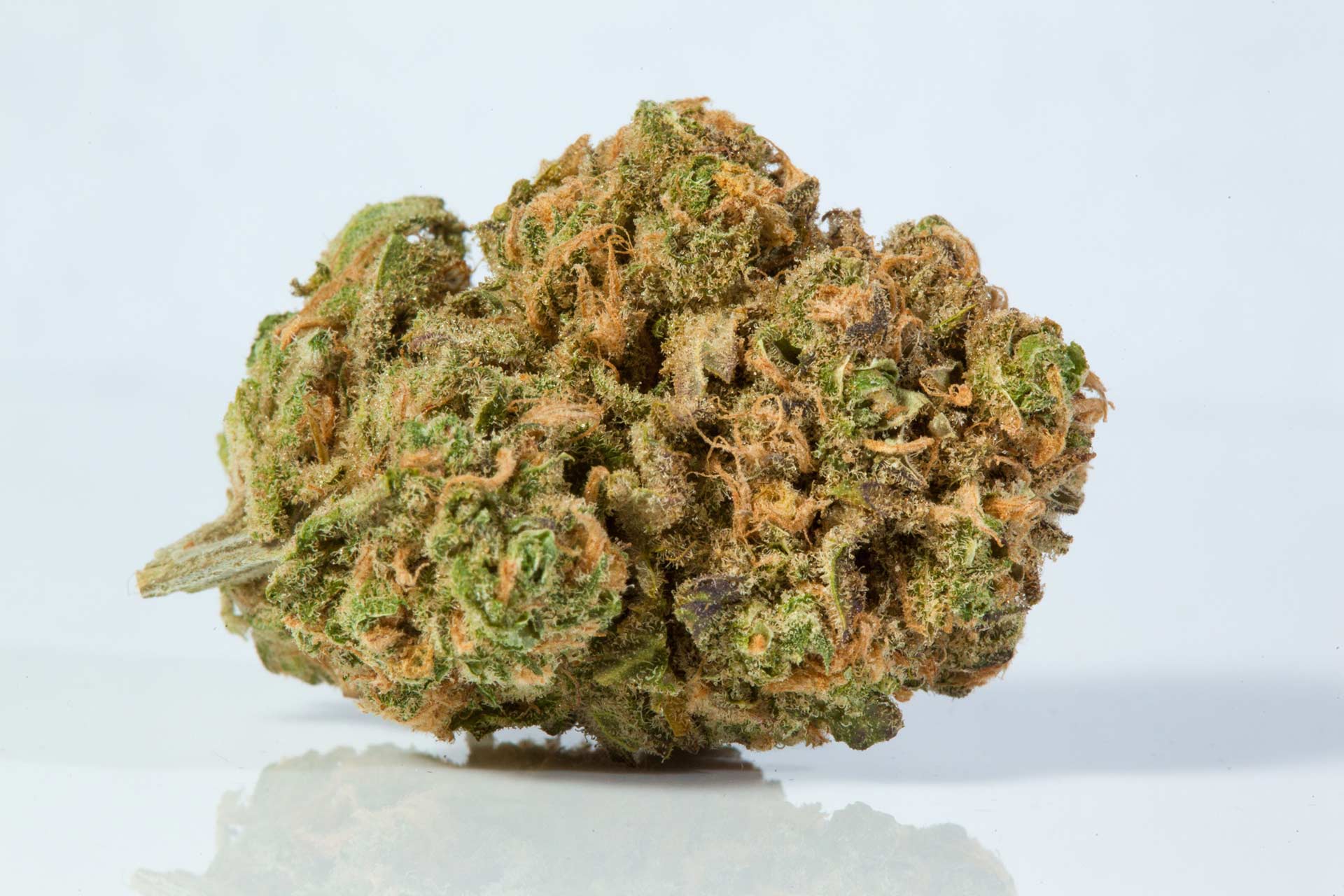
Sour Diesel, on the other hand, is dominated by caryophyllene and limonene terpenes. The caryophyllene and limonene contribute to this strain’s reputation for being energizing and uplifting, reducing depression and pain.
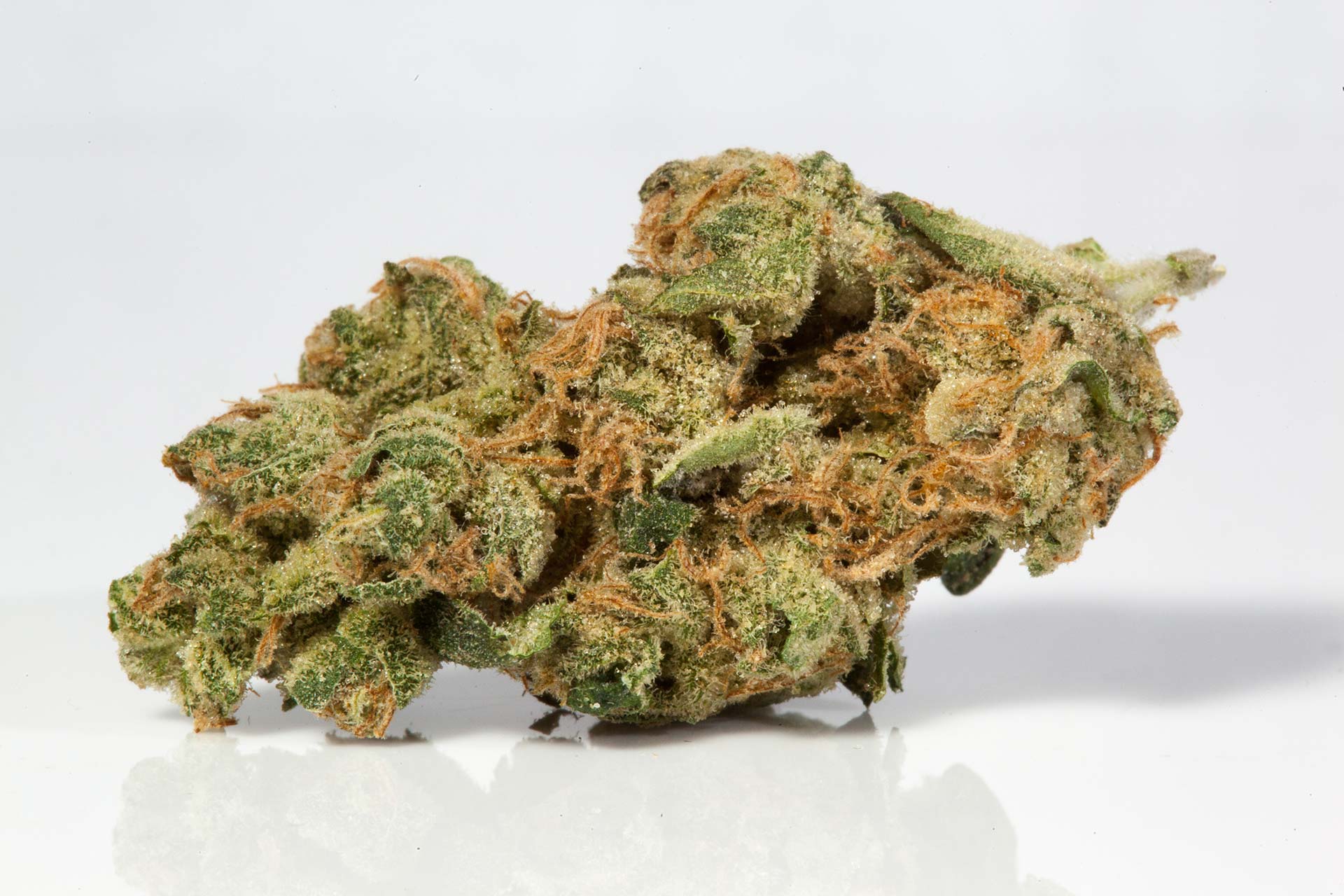
Finding the Right Terpenes
How do you find a strain/chemovar that contains a specific terpene? Leafly offers a “Find Your Strain” tool that can help you identify strains by terpene profile.
A few dispensaries, including our supporting member Lightshade, include terpene profiles online with their flower products; however, many dispensaries do not.
Budtenders should be able to help answer questions about strains which feature specific terpenes. In some states, including Colorado, you can even smell the flower in the dispensary, allowing you to identify the dominant terpene strains with your own nose.
Max Montrose from Trichrome Institute explains how smell can lead you to the strongest terpenes in the video clip below.
Growing Seasons and Conditions
If you eat fresh fruit or vegetables, you know that growing conditions and the time of year can make a big difference in the flavor. The same goes for marijuana flower.
Each state with legal recreational and/or medical marijuana has different laws restricting who can grow and where they can grow. Growing outdoors is a popular option, though companies face challenges posed by weather, pests and disease. While growing indoors provides more control, it’s also quite a bit more expensive. Indoor growers also face challenges with mold and spider mites.
How Terpenes Are Affected by Growing Methods
Individual growers can end up with very different results from the same strains based on where and how they grow and harvest their plants.
Let’s go back to our Sour Diesel example. Imagine that two different companies are growing this strain.
- One grower might be focused on producing the most flower for the lowest price. Their Sour Diesel flower will contain all the cannabinoids and other plant compounds found in this strain/chemovar. However, it’s very likely that their product will lack the strong terpenes that come from careful cultivation and harvesting.
- Another grower might take those same Sour Diesel seeds, but use different growing methods designed to maximize all the plant compounds, including the terpenes. It takes more time and effort (and money!) to create high-quality flower. Though this flower costs more, you get bigger benefits and may even have to use less to achieve your health goals.
You may even notice some variation in the same strain/chemovar sold at the same dispensary over time. These variations shouldn’t be extreme in high-quality products, however.
Tips for Finding the Right Marijuana Strain for Your Needs
The different options may have you feeling overwhelmed at this point! However, it’s a big improvement from the old days of buying a bag of mystery buds without any knowledge of where they came from or what they contain.
Here are some tips to help you find the best flower strain/chemovar for your needs:
- Start with your specific goals and then find a product that fits, not the other way around.
- If you need help matching your goals to terpenes and cannabis strains/chemovars, give Leaf411 a call at 1-844-LEAF411 (1-844-532-3411). Our cannabis-trained nurses are happy to help with your questions!
- Remember that the THC levels are similar across most strains/chemovars, unless the strain is specifically grown to be high CBD. The terpenes are what create different effects.
- Focus on plant terpene profiles, not whether the strain/chemovar is listed as an indica, sativa or hybrid.
- Ask a budtender for help finding strains with specific terpene profiles.
- Find dispensaries that have a reputation for selling high-quality flower. You can check the Leaf411 member directory for dispensaries we’ve vetted that are committed to sourcing top-of-the-line products. Online reviews are also helpful.
In our next post, we’ll provide more information to help you prepare for your first dispensary visit. Be sure to check back next week!
Subscribe to our newsletter below and stay up-to-date on Leaf411 events and information.
Have questions about terpenes? Our nurses can help! Call our free, anonymous hotline at 844-LEAF411 (844-532-3411).
The Leaf411 cannabis nurse hotline provides free education and directional support to the general public about the safe use of legal cannabis. We partner with select business members who meet our rigorous standards to extend our education and outreach efforts.
What Are Terpenes?
Medically reviewed by Katherine Golden, RN
Written by Denise Rustning
You likely have heard of cannabidiol (CBD) and tetrahydrocannabinol (THC).
But how about terpenes? These compounds play an important role in the cannabis plant’s health benefits.
Understanding the therapeutic effects of specific terpenes can help you find the right cannabis product for your needs.
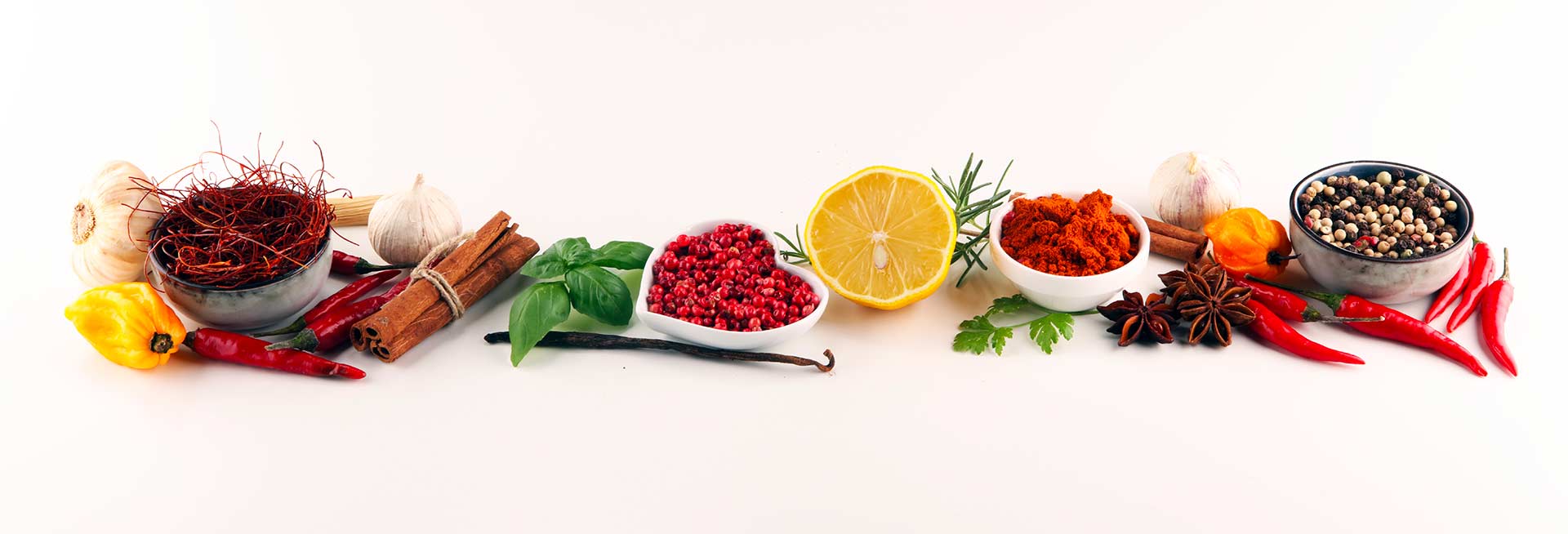
Terpenes: The Plant Compounds You Already Know
Do you use lemon peel in your baking? Or have you found that lavender products help you relax?
Lemon, lavender and many other plants contain terpenes. Terpenes are aromatic molecules that help give certain plants their distinctive smells. These compounds also have therapeutic benefits.
For example, you’ve probably seen essential oils, candles, and even sleep masks that contain lavender for relaxation. The terpene linalool is one source of both lavender’s distinctive scent and relaxing effects.
Many people also use citrus-based scents, like lemon, for a mood lift and energy. The lemon smell comes in part from limonene, a terpene contained in citrus peels.
Cannabis also contains many familiar terpenes, including linalool and limonene. These terpenes add to the plant’s therapeutic benefits.
Terpenes and the Entourage Effect
Cannabis flower (buds) and full spectrum products contain many other cannabinoids in addition to CBD and THC. They also contain different beneficial plant compounds, including terpenes, flavonoids and fatty acids. All these plant compounds work together to create an “entourage effect,” providing synergistic benefits beyond what a single compound could provide.
Boosting Your Health with Plant-Powered Terpenes
Have you heard of forest bathing? This practice involves spending quiet time in a forest, engaging all your senses, including your sense of smell. The practice began in Japan, where it’s called shinrin-yoku. Forest bathing reflects research showing how we benefit physically and mentally from time in nature. In fact, scientists are finding that both plant essential oils and terpenes—airborne plant compounds—play a central role in nature’s positive impact on human health.
The terpenes alpha-pinene and beta-pinene are found in many evergreen forest trees, contributing to forest bathing’s positive health impact. They’re also present in some cannabis plant strains.
Pinene isn’t the only terpene out there, though! Thousands of different terpenes exist in nature, and many different terpenes have been found in the cannabis plant.
Common Cannabis Terpenes
Some of the most common terpenes found in cannabis are listed below. It’s important to note that plants can contain multiple terpenes.
- Myrcene: Commonly found in cannabis strains/chemovars as well as in basil, lemongrass and ylang ylang. Myrcene helps promote sleep and may also reduce inflammation.
- Limonene: Well-known for providing a mood lift while reducing stress and anxiety, all by elevating serotonin levels in the brain.
- Linalool: Shown to reduce anxiety and depression, while also improving sleep quality. Linalool is also being tested in clinical settings to help reduce pain and nausea following surgery.
- Pinene: Found in evergreen trees, and also in many cannabis chemovars, pinene has anti-inflammatory and respiratory benefits.
- Beta-Caryophyllene: Found in black pepper, oregano, and cloves as well as cannabis. Beta-caryophyllene (also referred to as “caryophyllene”) is unique among terpenes found in cannabis, because it can bind directly to CB2 receptors which are located throughout your body. Caryophyllene is being studied for its impact reducing inflammation and pain, as well as its potential to protect age-related cognitive decline.
- Alpha-Caryophyllene (Humulene): Also found in hops, humulene works together with caryophyllene to reduce inflammation. It also can suppress appetite.
Terpenes and Heat
Terpenes are affected by temperature.
The evaporation point is when terpenes start releasing volatile compounds, usually between 70-100 degrees Fahrenheit (°F). If you’ve ever walked through an herb garden on a sunny day, you’ve likely noticed you can smell the plants more strongly. That smell is in part due to terpenes.
When plant terpenes reach their boiling point, they are fully vaporized. This is at a much hotter temperature, over 300°F, though boiling points vary between different terpenes.
Terpenes are released when cannabis is smoked. Lighters need to produce a very hot flame in order to ignite materials—in fact, the temperatures on a lighter flame can range from 430°F to over 2,000°F. The temperature of a lighter flame is hard to control. Also, combustion can destroy many of the beneficial plant compounds as a result of the high heat.
As an alternative, some people prefer vaping cannabis flower so they can more precisely control the temperature to maximize terpene release. Some cannabis users describe this control like having a volume control on a radio. Lower temperatures create a quieter, more subdued effect, while hotter temperatures will give you a more intense result, in large part due to which terpenes are released.
Our “How to Use Cannabis” post provides more details.
Terpene Benefits in Topical Products
Terpenes provide numerous benefits without the addition of heat. After all, you don’t have to smoke the forest to gain benefits from forest bathing!
As we mentioned before, terpenes become available through evaporation that occurs at lower temperatures than smoking or vaping.
Research supports aromatherapy’s impact on the body’s limbic system to positively impact mood and recovery. And one of the key components in aromatherapy essential oils is terpenes!
Our understanding of how these plant compounds contribute to the therapeutic benefits of cannabis is growing every day. Experts such as Jordan Person, LMT, LPN, continue to look at how to combine the benefits of cannabinoids such as THC and CBD with specific terpene profiles to achieve maximum relief. For example, she discusses how a cream containing both CBD and limonene helps to provide uplifting recovery following vigorous outdoor activities.
Using Terpenes in Edibles and Tinctures
The cannabinoids (THC and/or CBD, along with other cannabinoids) provide the strongest effect you feel with edibles, tinctures and swallowed pills. However, terpenes also add nuanced effects.
How does this work?
A full-spectrum CBD tincture made for sleep might be made from hemp with high levels of linalool. On the other hand, a full-spectrum CBD tincture designed for focus may have higher amounts of caryophyllene and limonene. The amount of CBD in each product may be the same, but the effects are different thanks to terpenes. (We’ll dive deeper into the connection between terpenes, cannabinoids and different cannabis strains in our next post.)
This video below provides a good explanation of the science behind terpenes in edible products.
The Connection Between Terpenes and Cannabis Strains/Chemovars
You may be wondering about the connection between terpenes and cannabis strains (also called chemovars). Does an indica strain contain more linalool than a sativa? What strain has the highest caryophyllene amounts?
In our next post, we’ll look at the connection between terpenes and cannabis strains/chemovars.
Subscribe to our newsletter below and stay up-to-date on Leaf411 events and information.
Have questions about cannabis? Our nurses can help! Call our free, anonymous hotline at 844-LEAF411 (844-532-3411).
The Leaf411 cannabis nurse hotline provides free education and directional support to the general public about the safe use of legal cannabis. We partner with select business members who meet our rigorous standards to extend our education and outreach efforts.
Leaf411 Question of the Month: Does Cannabis Interact with Other Medication?
Medically reviewed by Katherine Golden, RN
Written by Denise Rustning
Approximately half of all Americans take at least one prescription drug every day, according to a Consumer Reports study. Many more people take non-prescription, over-the-counter painkillers, antacids and other medications.
Not surprisingly, a fair number of these people are seeking alternatives to their medications. In many cases, people are turning to cannabis—either marijuana (cannabis containing >0.3% THC, which is sold legally in dispensaries), or cannabidiol (CBD) hemp products that are sold in retail stores and online.

Thinking About Adding Cannabis to Your Medicine Cabinet?
We always suggest that you talk to your healthcare provider before taking any new medication. That includes CBD hemp or marijuana. Our Leaf411 cannabis-trained nurses can provide education and guidance as well as how to discuss the possibility of adding plant medicine into your regimen with your healthcare team via our free hotline: 844-LEAF411 (844-532-3411).
Also, it’s important to talk to your healthcare provider before stopping any prescription medication. It is imperative that your prescribing physician should always be the one who guides you with stopping or weaning off any pharmaceuticals.
Understanding How Cannabis Interacts with Other Medications
Have you ever wondered why you’re told to not drink grapefruit juice with certain prescription drugs?
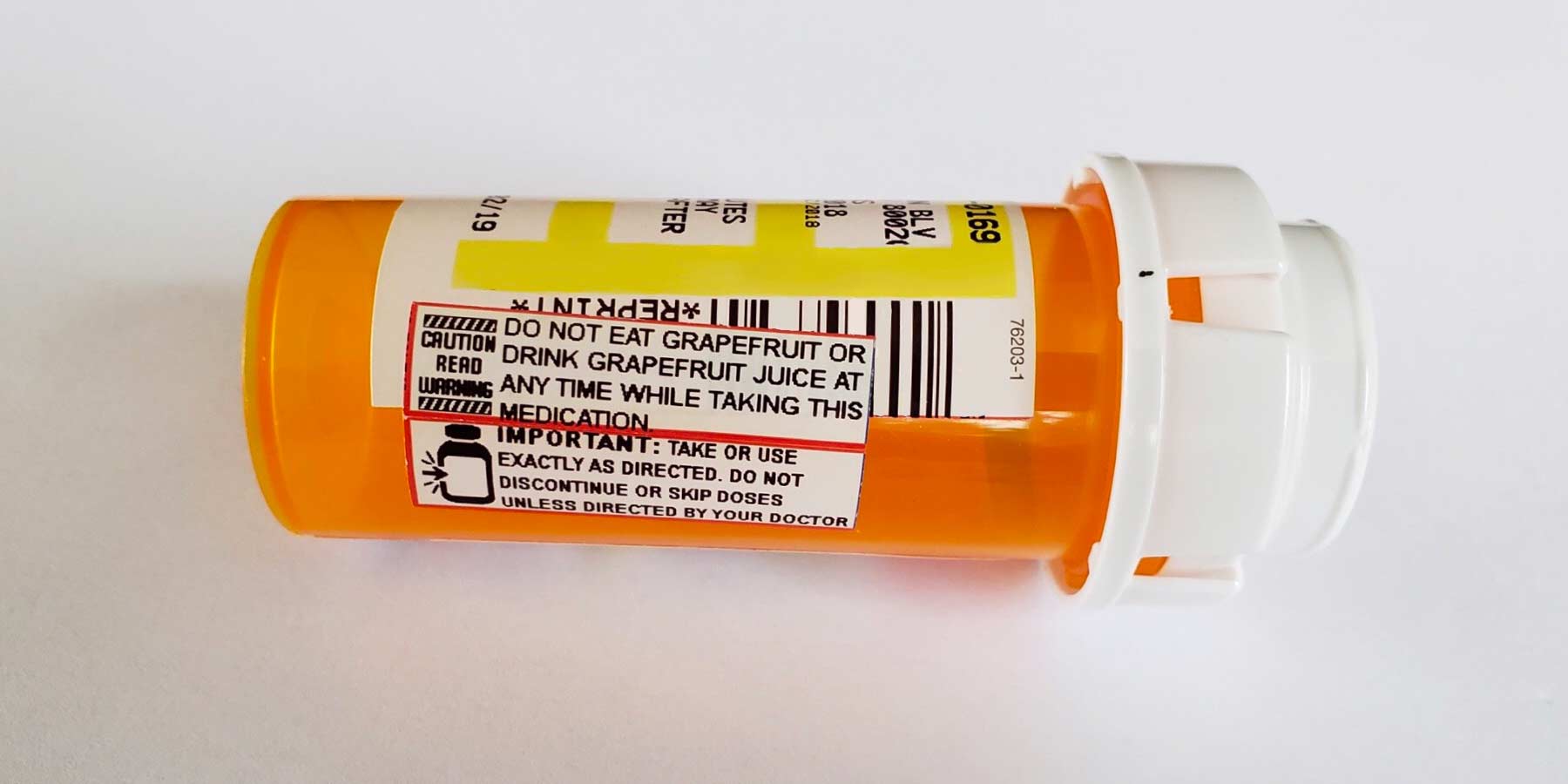
When you take medicine by mouth, it passes through your digestive system. The digestive system’s enzymes metabolize (break down) the medicine in your liver so that some of it can enter your bloodstream. The medicine dose takes into account normal digestive processes.
However, grapefruit juice affects several digestive enzymes. It blocks the enzymes’ action, and can result in too much or too little of the drug entering your bloodstream.
What does this have to do with cannabis? Well, the cannabinoids in cannabis—especially CBD—affect your digestive enzymes in a similar way that grapefruit does. In fact, scientists have found that CBD has an even stronger effect on the cytochrome P450 enzyme than grapefruit.
Cannabis, Statins, and Blood Thinners: Use Caution
An emerging area of concern is with cardiovascular medications, including statins and blood thinners. Many of these medications are metabolized by the same liver enzymes as cannabis. As a result, people who use cannabis while also taking statins or blood thinners may end up getting a higher dose of their prescription medicine than they intended, since the liver is breaking down the drug differently than normal.
Does this mean you cannot use cannabis? Not necessarily. The key is to talk with your provider and discuss any changes that need to be made to your medication dosage, frequency or timing. You might consider sharing the link to this article from the Journal of the American College of Cardiology which provides very conservative guidance for doctors to use as a screening tool who have no experience or knowledge about cannabis.
The Benefit of Starting Slow with Cannabis
Not all drugs are metabolized by the same liver enzymes. However, even if you’re taking medications that are not directly impacted by cannabis in your digestive system, it’s worth it to start with a low dose of marijuana or CBD, and to go slow. By starting slow, you can see how the addition of marijuana or CBD impacts your ongoing medications (after checking with a healthcare provider, of course!).
Also, Dr. David Gordon (Dr. Dave), founder of 4Pillars Health & Wellness, notes that people usually only need a small dose of cannabis for therapeutic benefits. This minimizes the risk of side effects. Dr. Dave explains that as an integrative physician, “We start with just a small amount, just to stimulate our own internal system. These are dosages that often don’t cause any intoxication or have any significant interaction.”
Dr. Dave is experienced at looking up potential interactions with medicinal cannabis. He’s found that most drug interactions don’t preclude someone from using cannabis, though he notes that drug doses may need to be adjusted. (You can read more from our recent interview with Dr. Dave here.)
Getting Answers to Your Cannabis Questions
Our Leaf411 hotline nurses have special training on cannabis-medication interactions. They also have access to a robust database of research.
We encourage you to call our free hotline at 844-LEAF411 (844-532-3411) with your questions about how CBD or marijuana may interact with other medications you are taking.
CBD Hemp 101: Full Spectrum, Broad Spectrum, Distillate and Isolate
Medically reviewed by Katherine Golden, RN
Written by Denise Rustning
Are you confused by all the different types of CBD? Don’t worry, we’ve all been there before!
All cannabinol (CBD) starts off as a compound in either hemp or cannabis plants. The plants undergo various processes to extract CBD, resulting in a range of CBD products. We break down the main types of CBD below, along with the pros and cons of each type.
Full Spectrum CBD: Wide-Ranging Hemp Benefits
Full spectrum CBD oil contains most of the of the hemp plant compounds, including terpenes, flavonoids, essential fatty acids, CBD, cannabigerol (CBG), and trace amounts of tetrahydrocannabinol (THC), staying below the 0.3% federal limit for CBD hemp products. The plant compounds work together to create a synergistic entourage effect that can boost the benefits of the CBD hemp plant. Full spectrum CBD oil is often a green color, reflecting the presence of those compounds. The color and flavor can even change between product batches due to variations in the plants.
- Pro: Full spectrum CBD provides all the power of the hemp plant, available in a variety of product types from topicals, tinctures and edibles to vape concentrates, as well as crumble that can be dabbed (smoked with a special rig). It’s less processed than other CBD concentrate types, as well.
- Con: Full spectrum CBD contains trace amounts of THC (under 0.3%). While it’s not enough THC to be intoxicating, the verdict is out on whether it’s enough to trigger a positive drug test result. Also, because full spectrum CBD retains the original plant compounds, it has a natural flavor that some people may find off-putting. Many manufacturers add fruit or mint flavoring to their full spectrum products to balance out the flavor.
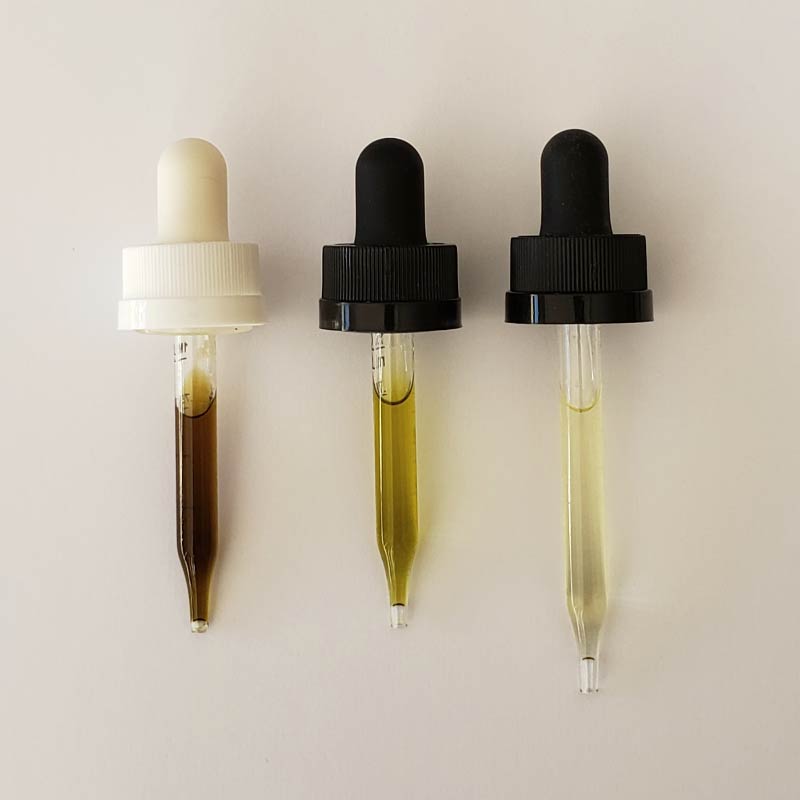
Broad Spectrum CBD: A THC-Free Option Loaded with Hemp Power
Broad spectrum CBD is similar to full spectrum CBD, except that the product goes through additional refinement to remove all THC. It’s important to note that the terms “full spectrum” and “broad spectrum” sometimes get confused, even by product manufacturers and marketers. Furthermore, past research has shown that product labeling can sometimes be inaccurate. Be sure to check the manufacturer’s test results on the product Certificate of Analysis (COA) to confirm this!
- Pro: Broad spectrum CBD maintains most of the plant benefits while eliminating THC, and can be used in the same ways that full spectrum is used. This may be an appealing option for people who want or need to avoid THC due to workplace drug testing; however, given the confusion around labeling, a safer option would be CBD isolate, which we discuss below.
- Con: Removing trace amounts of THC requires additional refinement which also pulls with it additional minor cannabinoids and lessens the CBD content in the process, moving CBD further away from its full plant form. Also, given the concerns around inaccurate labeling and testing, broad spectrum CBD is not the ideal choice for athletes and professionals who are subject to drug testing.
Distillate CBD: A Powerful Hemp Concentrate
Distillate CBD is a concentrate containing between 80% – 90% CBD. In order to make distillate CBD, additional steps take place to filter out impurities and remove most of the non-cannabinoid compounds, including terpenes, flavonoids and essential fatty acids. This process results in a product with a honey-like consistency that is odorless and tasteless.
- Pro: Distillate CBD retains the plant cannabinoids, including minor cannabinoids and THC (less than 0.3%). Distillate is often used in vape products, edibles and topical products given its high concentration, purity and lack of odor or taste. This results in a more consistent product.
- Con: Distillate CBD undergoes additional post-processing extraction. Also, it provides a narrower range of plant-based benefits when compared to full spectrum products.
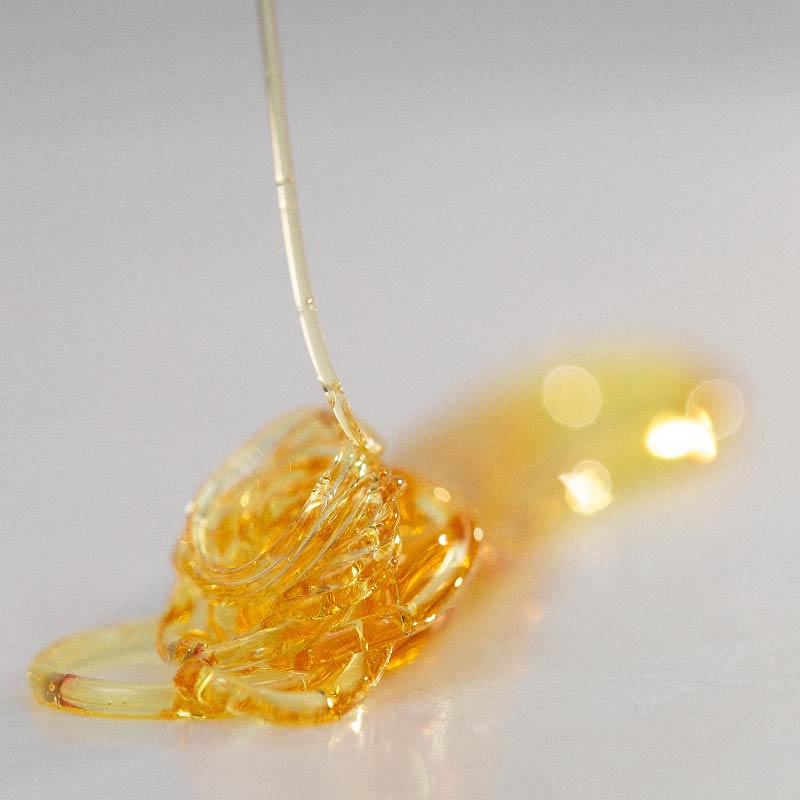
Isolate CBD: Pure Cannabidiol
Isolate CBD is the purest form of CBD available, consisting of approximately 99% CBD in white powder form. Unlike distillate, CBD isolate doesn’t contain any other cannabinoids or plant compounds. This makes it a favorite among people, such as professional athletes, who cannot risk ingesting even trace amounts of THC. Products made with isolate CBD are often labeled as “No THC,” though you’d want to check the Certificate of Analysis (COA) test results to ensure this is true.
Our Leaf411 nurses recommend using isolate CBD consumer products that are designed to provide consistent, pre-dosed administration, and which are manufactured by reputable companies, such as our member partners. While isolate CBD is also sold as bulk powder, we have concerns about product quality and dosing.
- Pro: Isolate CBD does not contain any THC, making it the safest bet for people who cannot risk positive drug tests. Manufacturers use isolate CBD that they mix into their drink products, foods (edibles), topical products or tinctures, while isolate CBD wax can be dabbed but should be used with caution.
- Con: The drawbacks are similar to those we discussed with distillate CBD. Isolate CBD’s purity means that many other beneficial plant compounds have been stripped out.
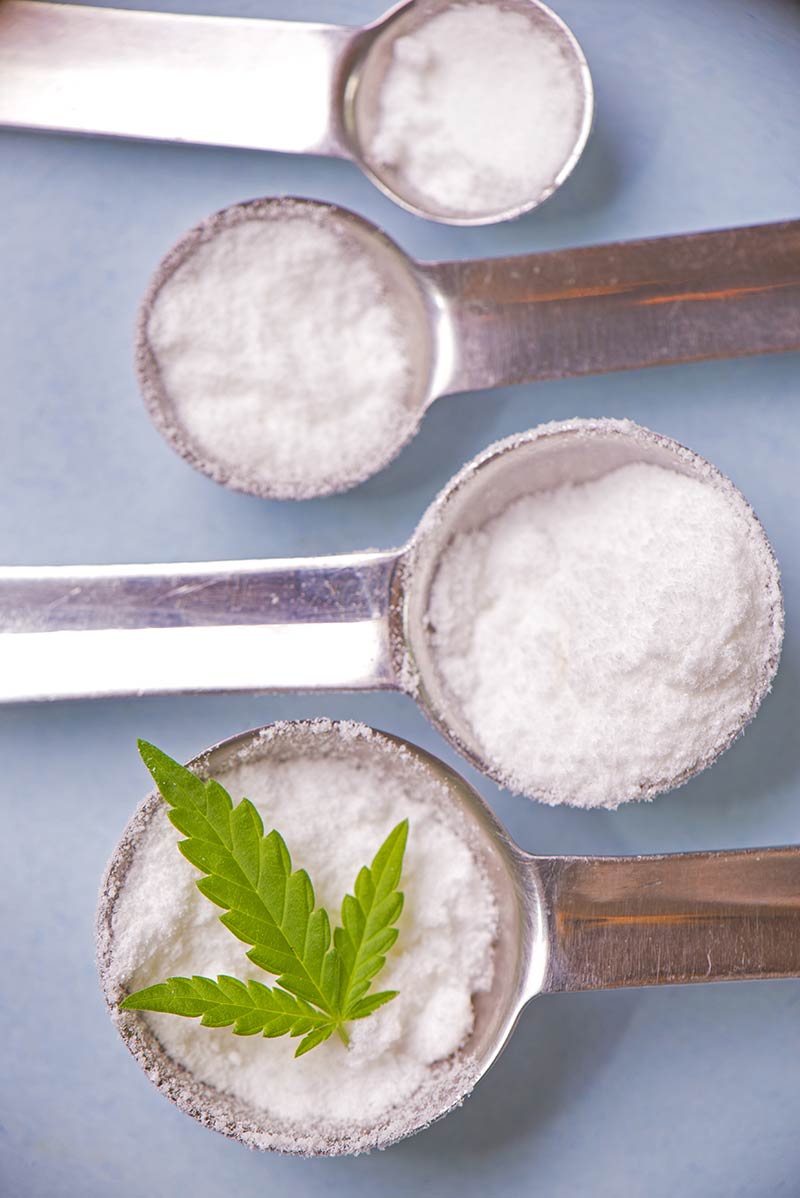
How to Choose the Best Type of CBD
We wish there was an easy cheat sheet or quiz for finding the best type of CBD. Beyond a few basic considerations, though, it can be a process of trial and error.
We encourage you to continue your journey into finding reliable, accurate CBD information from reputable sources. One of our favorite sources is ProjectCBD. You can find more CBD 101 information that we stand behind at this link.
Our Leaf411 cannabis-trained nurses are happy to provide guidance on the different types of CBD and how they might help address your specific needs. Call our free, anonymous hotline at 844-LEAF411 (844-532-3411) for medically-sound answers to your cannabis and hemp questions.
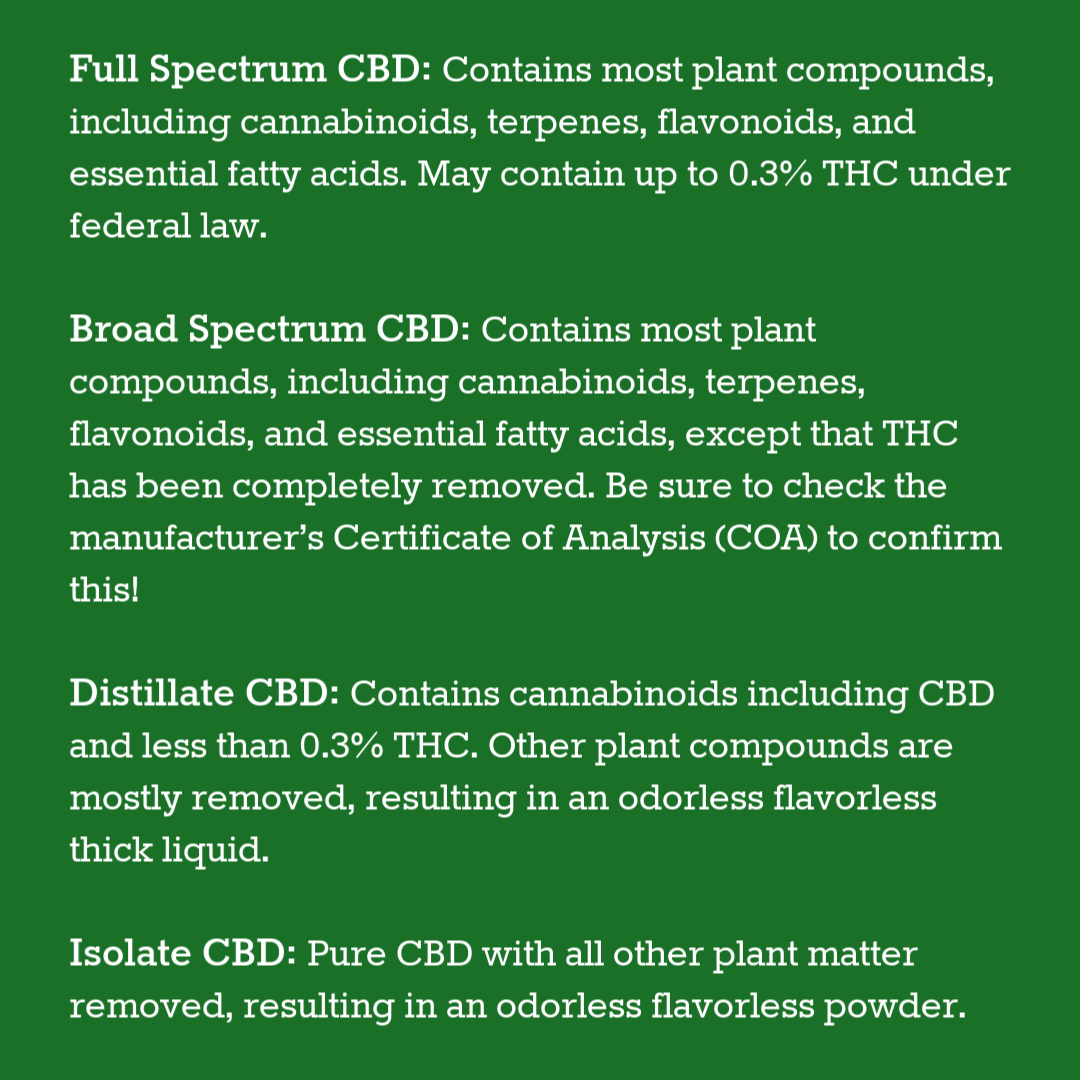
Your New Year’s Resolutions – And How Cannabis Might Help
Medically reviewed by Katherine Golden, RN
Written by Denise Rustning
Look at the top New Year’s resolutions and you probably won’t be surprised. Most goals are focused on healthy choices—eating better, sleeping more, exercising. At their core, our resolutions are about finding better balance in our lives.
You might be surprised to learn that legal cannabis and hemp CBD can support your goals for better balance. The key is to use these products in moderation together with other positive lifestyle changes.

You Have an Endocannabinoid System – And It’s Made for Balance!
Your body already has a built-in system for maintaining internal balance (also called homeostasis)—the endocannabinoid system (ECS). This system exists in humans and most animals. It plays an important role in regulating metabolism, sleep, mood, and immunity, along with other functions.
Your body’s ECS contains two types of cannabinoid (CB) receptors: CB1 and CB2.
- CB1 receptors are found in your central nervous system—primarily your brain and spine. These receptors play a role in memory, behavior, appetite, motor control, and perception of pain.
- CB2 receptors exist throughout the body, helping to control inflammation and immune response.
Your body makes endocannabinoids which bind to the CB1 and CB2 receptors, signaling when your body’s system needs to take action to maintain or restore internal balance.
You can also use products which contain cannabinoids that interact with these same CB1 and CB2 receptors to help bring balance.
There are many different cannabinoids. These include cannabidiol, better known as CBD, and tetrahydrocannabinol, or THC. Both are present in cannabis. THC provides the “high” that many people associate with cannabis, while CBD doesn’t have any Intoxicating effects.
When thinking about the connection between your ECS and cannabis, it’s helpful to look at how you already use medicines to help your body. For example, your body generates pain-killing endorphins in response to pain, but you can also take ibuprofen to reduce pain and inflammation. With cannabis, the difference is that endocannabinoids (produced by your body) and cannabinoids (produced by the cannabis plant) are very similar to one another, which minimizes unwanted side effects.
Kickstarting Your Resolutions with a Good Night’s Sleep
Better sleep may not be on your list of New Year’s resolutions. However, being well-rested will definitely help you achieve your goals!

While many of us get the recommended amount of sleep each night, the quality of that sleep isn’t great for a lot of folks. The National Sleep Foundation reports that over a third of Americans report low-quality sleep.
Many people are discovering that cannabis and CBD hemp products help them relax, fall asleep, and wake up more well-rested. However, finding a product that works for you may take time, and the options can feel overwhelming!
If you are interested in using flower (the plant buds), start with indica-dominant or hybrid cannabis strains that are known to promote good sleep. These strains also contain beneficial plant compounds called terpenes that help with sleep as well.
Cannabis edibles designed for sleep are also an appealing option for many people. While edibles take longer to kick in than smoking or vaping, their effects also last longer. This means that if you wake up in the middle of the night to use the restroom, you might feel unexpectedly high. Edibles also have a reputation for causing brain fog in some people when they wake up, though this isn’t the case for everyone. Timing is key when consuming your product. Our nurses at Leaf411 can help guide you in the right direction for the best edible dosage and timing.
Also, you’ll want to check the label on any edibles or tinctures for the full list of ingredients. Manufacturers sometimes add melatonin, valerian or other herbs to boost their product’s sleep-inducing power. It’s up to you to decide whether those added ingredients are needed or not.
Our founding members at 1906 have put exhaustive research and refinement into their formulation, Midnight, because sleep issues are one of the most prevalent health problems Americans face. Midnight’s key ingredient, corydalis, has been used for millennia, and works in several crucial ways which maybe why it’s 1906’s best-selling product!
Cannabis plays a useful role in improving sleep quality, though too much THC and CBD can be counterproductive, increasing alertness or anxiety, or leaving you feeling groggy the following day. If you experience any of these symptoms, you may want to look for a product with lower THC and CBD concentrations or try CBD hemp products instead.
Some people prefer products that don’t contain THC, either due to employment-related concerns with drug testing, anxiety or personal preference. CBD isolate products provide a great alternative—but make sure you ask for a COA (Certificate of Analysis) prior to purchasing to ensure it has zero THC.
It’s important to note that CBD is not a sedative. It will not knock you out like a prescription sleep medication. Instead, CBD’s power comes from its potential to reduce anxiety and pain while also helping to regulate sleep. Hemp-based products are widely available online and in retail stores, eliminating the need to visit a dispensary (though many dispensaries may carry CBD products as well). Remember to look for reputable manufacturers who provide COAs to back up their product quality.
Our founding member Altus’s mission is to empower you to make the most educated and personal choice when selecting a cannabis product. They created helpful Pillars to categorize their products based on users’ needs. Their Ritual products are low-dose thc or non-intoxicating products designed for daily lifestyle needs. That includes maintaining endocannabinoid system balance, managing minor issues, and helping to get better rest.
If you’ve ever talked to our Leaf411 nurses, you’ll know that cannabis is only part of the picture when it comes to better sleep. We also encourage you to look at underlying issues and bedtime habits that may be keeping you up at night. Even the strongest indica can only do so much, if your nighttime routine includes scrolling through drama-filled threads on Twitter, Facebook or Instagram
Our Leaf411 hotline nurses are happy to discuss the pros and cons of different cannabis sleep products with you. Call our free, anonymous hotline at 844-LEAF411 (844-532-3411) for guidance specific to your needs.
CBD-Powered Workout Recovery
Exercise tops many peoples’ lists of resolutions. Sadly, it’s a resolution that many people quickly abandon for well-known reasons: the goal isn’t specific enough; it’s not stated positively; or it doesn’t answer the “why”—that is, why the goal is important to you. Many articles provide helpful tips for sticking with your exercise goals (like habit tracking or setting specific goals or identifying why you’re doing it).
We have an additional suggestion for keeping your exercise resolutions: CBD. Waking up early on cold, dark winter mornings is hard enough without fighting against soreness from the previous days’ workout. Many professional athletes use CBD products for pain and post-game recovery. You don’t need to be a pro player to tap into the benefits of CBD, though!
Our founding members over at Arcanum have been dedicated to producing products that complement active lifestyles. They were the first company to sponsor a professional sports team in the United States and know a thing or two about recovery!
Arcanum Edge’s Sarco Freeze topical cooling gel comes in two different strengths, and combines CBD with arnica, menthol and other herbs to provide immediate post-workout relief while also soothing sore muscles. Sarco Freeze received a positive review by the Athletes for Care Tastemakers program, which is made up of professional athletes.
They also offer Sarco Skin, the first CBD and menthol-infused kinesiology tape and The Coil family of tinctures which are terpene-infused for more benefits and bioavailability.
Arcanum Edge’s best-selling product is The Quill transdermal gel delivery pen. The Quill provides patented transdermal delivery of a precise microdose of full spectrum extract and terpenes. Leaf411 is proud to support Arcanum Edge as a trusted source for performance-driven CBD products. Arcanum Edge products are third-party tested with their COAs available online. They also provide a 30-day, 100% money back guarantee.
Out of Balance: Too Much Cannabis?
Cannabis is a tool, not a magic cure-all. While we enthusiastically support the benefits that this plant provides, we also caution that you can overdo it with any medicine, including cannabis. If you would like help cutting down on your marijuana use or switching to different types of products (for example, switching from smokable flower to edibles), our Leaf411 cannabis-trained nurses can help by providing non-judgmental, balanced guidance. We also provide resources at our online library.
Are you interested in exploring cannabis or hemp CBD’s health benefits in 2020, but not sure where to start? Our nurses can help! Call our free, anonymous hotline at 844-LEAF411 (844-532-3411).
The Leaf411 cannabis nurse hotline provides free, anonymous education and directional support to the general public about the safe use of legal cannabis. We partner with select business members who meet our rigorous standards to extend our education and outreach efforts.
Leaf411 Question of the Month - December 2019

By Katherine Golden, RN
Leaf411 CEO
Each month, I’ll share insights on questions we receive at the Leaf411 cannabis nurse hotline. While the hotline is anonymous, we keep track of the types of questions we get so that we can continually improve our services.
A Surprising Cannabis Question
One issue I hear all the time, including when we’re out at events like our Veteran’s Day booth, is that people think they have to inhale to get the medicinal benefits from cannabis. It’s surprising to me that this misconception is still prevalent across all age groups.
For those of us in the industry, we know that many different THC and CBD product types are out there—edibles, tinctures, transdermal patches and gels. Sometimes we assume that everyone else knows about these options as well. But when I discuss ways that cannabis can be consumed, people are surprised and have a lot of questions about which route might work best for them.
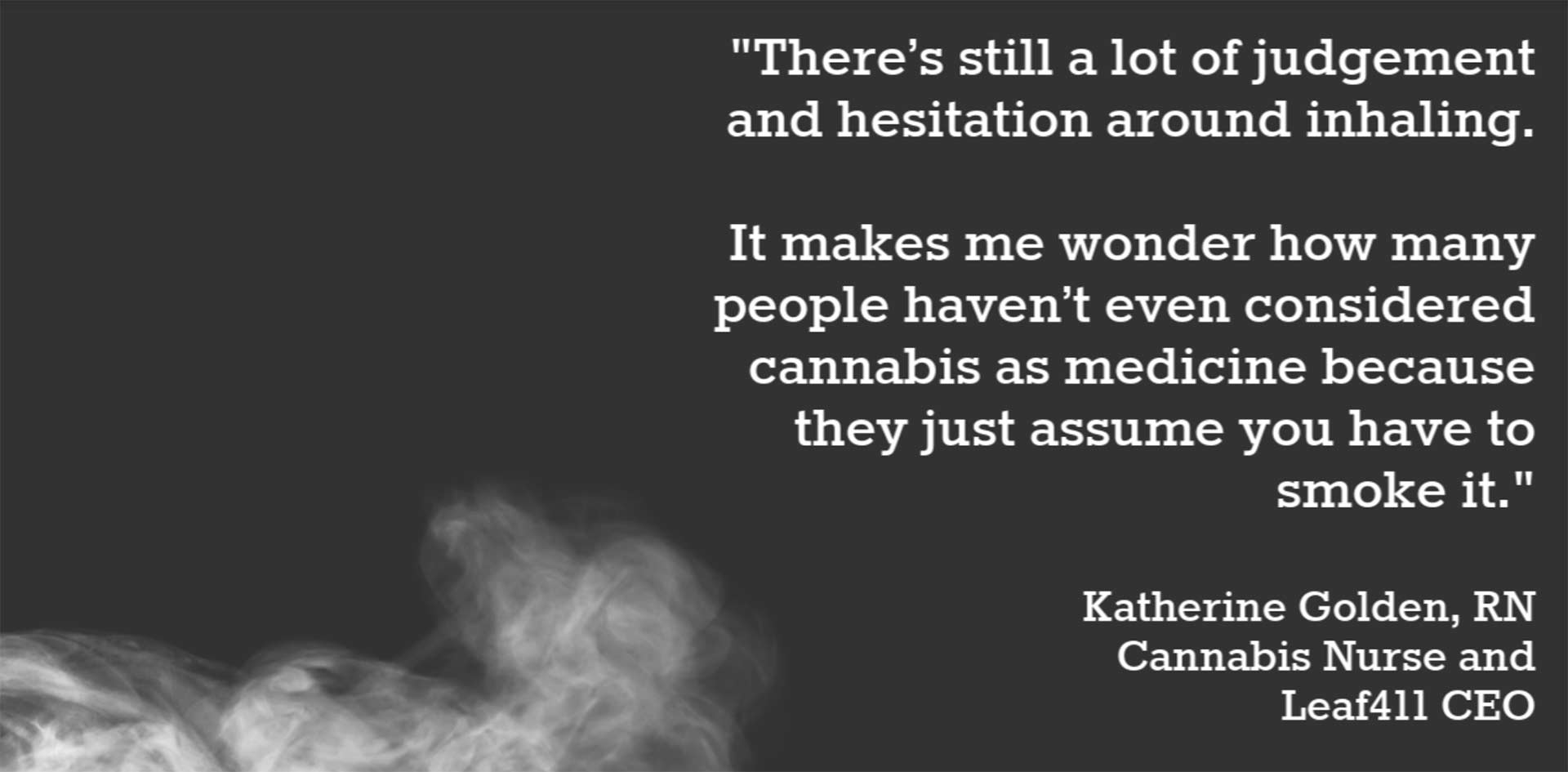
For example, I recently had a caller who wanted to try cannabis for a specific health concern but was worried how it might impact their liver issues. They had no idea that transdermal patches were an option. When I suggested a transdermal patch, they responded, “Oh, like a pain patch!” It was a medication delivery method the caller knew how to use, and it offered a safe alternative. Transdermal patches deliver THC, CBD and other cannabinoids directly to the bloodstream, bypassing the liver.
I also educated the caller about transdermal gel pens which are used on the venous areas like the inside of the wrist. They were just blown away that these types of advanced products exist in our market. Calls like this really underscore the need for education.
At Leaf411, Our Priority Is Always the Public
Our priority at Leaf411 is always the public, helping people find the best information and resources for safe cannabis use.
When I get a call, my first priority is to listen and understand why the caller wants to go down this road. I’ll ask questions about products they’re already using. If they haven’t tried cannabis yet, I’ll ask why they want to start and what their goals are.
I also spend a lot of time discussing balance. Cannabis by itself is not a magic bullet. I ask questions about callers’ activities of daily living, diet, exercise and sleep as well.
Cannabis is a plant that is shown to have benefits. However, it’s only one part of lifestyle changes that I and the other nurses encourage callers to consider.
I recently talked to someone who thought they would need to move to a different state to access legal cannabis. In fact, their home state has legalized medical cannabis, and hemp CBD products are available to be shipped to most states. They had not considered these options before our conversation.
My goal is to offer solutions that are financially sound and accessible, based on each caller’s unique situation and needs.
When it Comes to Cannabis, More is Not Always Better
We tend to think more is better. Based on my conversations with callers, that attitude has extended into cannabis and hemp CBD as well. But the latest science is showing that sometimes just a small amount of cannabis can provide symptom relief. We don’t need to flood our systems, when it comes to what most people are trying to treat.
Also, there is a point where you can take too much marijuana, or even too much hemp CBD. I educate callers about precautions they need to take when using cannabis, just like there would be precautions with any other medications.
We want to create the best service possible at Leaf411. It was important for us to get the phone hotline up and running, making sure it was a positive experience for people who contacted us, before adding other options to connect.
Last week, we launched the chat function on our website, providing an additional option for people to contact us.
When someone begins a chat with me, I bring the same level of attention to their concerns. I may start off chatting with someone online and then ask them to call the hotline to talk if at all possible.
People have so much to say, and tone of voice is so important to understanding someone’s needs and concerns. My hope is that the human touch that I and the other nurses provide through the phone hotline will reassure callers, even those who initially reached out to us via chat.
Call or chat our free, anonymous hotline today at 844-LEAF411 (844-532-3411) for answers to your cannabis questions!
Welcome to the Leaf411™ Blog
The Leaf411 Cannabis Nurse hotline is a FREE non-profit hotline available to all Colorado residents. We provide easily accessible cannabis education and support from trained medical professionals. When you call our free hotline, you’ll receive individualized answers to your questions. Our hotline phone number is: 1-844-LEAF411 (1-844-532-3411).
We also realize you might not have a specific question yet, or you may only be looking for general information. Our Leaf411 Blog is written for you. We provide information on trusted resources, research, cannabis news, and how-to guides for safely using cannabis and hemp products.
What You’ll Find on Our Cannabis Blog
We’re passionate about providing high-quality balanced information about legal cannabis use. Our blog provides an outlet for us to share cannabis resources to help you on your journey, whether you are new to cannabis or are already using cannabis recreationally or medically.
Not a cannabis user? We still have you covered! Our blog covers issues that impact all of us. Recreational and medical marijuanalegalization continues to spread across the country, and CBD and hemp products have earned their own spot in retail stores.Leaf411 is committed to providing balanced information to help you sort through the products that your patients, family members or friends may be talking about.
The People Behind the Leaf411 Cannabis Nurse Hotline
Our commitment is driven by firsthand experience after seeing the healing power of cannabis in our own lives and in the clinical setting. All of our hotline nurses are members of the American Cannabis Nurses Association (ACNA) and have completed specialized training. You can learn more about our nurses here.
Leaf411’s Founding Members
You’ll notice a growing list of founding members in our Member Directory. Our founding members support our nonprofit’s mission to provide free clinician-based cannabis education to consumers and industry partners. We screen all potential member businesses to ensure they meet our standards. Watch for future blog posts featuring our founding members’ perspectives on cannabis consumers’ needs.
Leaf411’s Cannabis Resource Library
We also offer a robust online resource library where you’ll find FAQs, disease-specific articles, information on how to get a Colorado medical marijuana card, and links to crisis lines and support groups. We always welcome your calls as well!
Sharing Our Cannabis Success Stories
Every day, more people are seeking out cannabis and hemp/CBD products to find relief and improve wellness. While you’ll certainly find those benefits within the space, you’ll also find an incredible community made up of people who have experienced the power of plant-based medicine. By sharing our stories, we help to remove the stigma and outdated stereotypes surrounding cannabis and hemp.
Katherine Golden, RN, Leaf411 co-founder’s story:
My journey in cannabis started 3 years ago when a close family member was suddenly diagnosed with Stage 4 lung cancer. He was in his 40s with kids in high school, and he’d never smoked. The doctors gave him 2-5 years to live. My family was completely devastated.
As a nurse and the medical professional in the family, I immediately researched alternative and less well-known treatment options to supplement my family member’s care. I began looking into the cannabis plant mainly to see how valid the research really was. At the time, I was extremely judgmental about cannabis. However, when I started searching well-known medical research sites like PubMed and ScienceDirect, I found tons of published research supporting the benefits of cannabis.
I’m happy to say that my family member is going strong 3 years since his cancer diagnosis. We don’t know exactly how the supplemental use of cannabis with his current regimen has helped reduce his tumors. However, everyone—including his non-cannabis physician—is watching his progress closely!
My personal experience led me to work as a lead nurse in a cannabis clinician’s office in Boulder, Colorado, where I met Jennifer, Leaf411’s co-founder. Every day, we saw patients who had benefited from cannabis. However, I realized not everyone had access to cannabis-trained medical professionals. I decided to dedicate myself full-time to my dream of making cannabis information from trained medical professionals readily available to everyone through the Leaf411 hotline. As a nurse, I can assure you that no question is too silly or strange when it comes to cannabis and your health. Give us a call today for help with your cannabis questions.
Jennifer Axcell, Leaf411 co-founder’s story:
I still remember when I started out as a cannabis patient. At the time, my primary care physician had happily prescribed me 13 different narcotics and opiates for chronic pain. However, these medications came with troublesome side effects and risks. When I asked my doctor about using cannabis instead, his answer was, “I don’t know anything about cannabis, I don’t want to know anything about cannabis, it’s federally illegal.” I didn’t know where to go to get answers to my questions about how to use cannabis to treat my chronic pain and PTSD. I was frustrated and confused, but determined to go down this path, even without help from a medical professional.
Three years later, cannabis has undoubtedly changed my life for the better. I also saw how cannabis improved other peoples’ lives while working with Katherine at the cannabis clinician’s office in Boulder, Colorado. Time and time again we saw patients leave with more questions than they came with. For new patients especially, it’s hard to know what questions to ask if you know very little about cannabis. The office we worked at did their best, but we knew much more could be done. After a lot of hard work, we’re thrilled to launch Leaf411 to provide the resource I wish I’d had when I first decided to look into cannabis as medicine.
Check back often as we regularly update our blog with the latest information and resources for the safe use of legal cannabis (marijuana and hemp).

